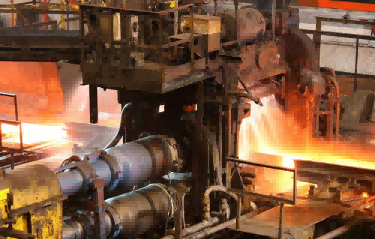Aluminum sheets are essential materials widely used in various industries due to their versatility, lightweight nature, and corrosion resistance. Among the different production methods, hot rolling and cold rolling are two common processes for manufacturing aluminum sheets. Understanding the differences between hot rolled aluminum sheet and cold rolled aluminum sheet is crucial for selecting the right material for specific applications. In this article, we’ll delve into the distinctions between these two processes and their resulting products.
Hot Rolled Aluminum Sheet
Hot rolling is a manufacturing process where aluminum ingots are heated above their recrystallization temperature and passed through rollers to achieve the desired thickness. Here are the key characteristics of hot rolled aluminum sheet:
1. Surface Finish: Hot rolled aluminum sheets typically have a rougher surface finish due to the high temperatures involved in the rolling process.
2. Grain Structure: The grains in hot rolled aluminum sheets are larger and less uniform compared to cold rolled sheets due to the recrystallization process.
3. Thickness Tolerance: Hot rolled aluminum sheets have looser thickness tolerances compared to cold rolled sheets, resulting in variations in thickness across the sheet.

Cold Rolled Aluminum Sheet
Cold rolling involves passing aluminum sheets through rollers at room temperature to achieve the desired thickness. Here are the key characteristics of cold rolled aluminum sheet:
1. Surface Finish: Cold rolled aluminum sheets have a smoother and more polished surface finish compared to hot rolled sheets due to the absence of high temperatures during the rolling process.
2. Grain Structure: Cold rolled aluminum sheets have a finer and more uniform grain structure, resulting in improved mechanical properties such as strength and ductility.
3. Thickness Tolerance: Cold rolled aluminum sheets have tighter thickness tolerances compared to hot rolled sheets, resulting in more consistent thickness across the sheet.

Differences and Applications
The primary differences between hot rolled and cold rolled aluminum sheets lie in their surface finish, grain structure, and thickness tolerance. These differences result in distinct mechanical and aesthetic properties, making each type suitable for specific applications:
Hot Rolled Aluminum Sheet: Often preferred for applications where surface finish and dimensional precision are less critical, such as structural components, automotive parts, and construction materials.
Cold Rolled Aluminum Sheet: Ideal for applications requiring a smooth surface finish, tight thickness tolerances, and enhanced mechanical properties, such as electronic enclosures, signage, and decorative elements.
In summary, while both hot rolled and cold rolled aluminum sheets serve important roles in various industries, understanding their differences in production methods and resulting properties is essential for selecting the most suitable material for specific applications. Whether it’s for structural strength or aesthetic appeal, choosing the right type of aluminum sheet can significantly impact the performance and quality of the end product.


